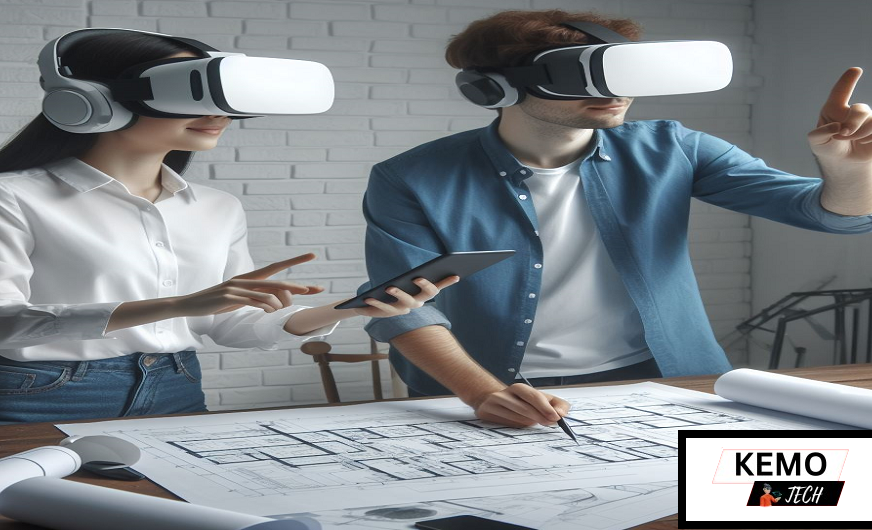In an industry synonymous with heavy machines repetitive processes and long assembly lines a quiet revolution is unfolding under the monotonous hum of equipment. Augmented Reality (AR) has transcended its origins in video games and social media filters to become a potent force for transformation in the manufacturing sector. The fusion of digital information with the physical world is not just a gimmick it’s a game changer that promises to redefine efficiency safety and precision on the shop floor.
AR in Manufacturing is More than Just Fluff:
Augmented Reality is not a concept of the future it’s a tool reshaping the present in the most significant business domains, and manufacturing is taking the lead in its practical applications.
When you think of AR don’t just picture digital overlays on real world images think of complex machinery assemblies being projected as 3D models superimposed on the actual machines to guide onsite technicians through fault detection and repair procedures. Imagine a warehouse operator using a head mounted display to see real time data on stock levels and product details floating in their field of vision. It is not just about adding glitz to the manufacturing process AR is directly impacting efficacy accuracy and innovation.
The Nuts and Bolts of AR Integration:
- Integrating AR into the manufacturing landscape involves:
- A thorough assessment of the existing processes.
- Finding application areas where AR can truly add value.
- An understanding that its implementation demands a significant change in the organizational culture.
Get the integration right however and the results are impressive. Enhancing training simulations with AR can cut staff preparation times and ramp up recruits effectiveness. Visualizing complex machinery service procedures can drastically reduce error margins and downtime. By overlaying real-time data analytics on equipment decision makers can keep a pulse on production metrics and identify optimizations instantly.
AR and the Human Factor:
One of AR’s most attractive qualities is its ability to connect humans and machines in a more intuitive and interactive manner. Gone are the days of flipping through thick operation manuals now workers can access essential information on the spot while hands free. It is not about replacing human labor it’s about empowering it with tools to work smarter faster and with a higher degree of precision.
Human errors a persistent challenge in manufacturing can be significantly reduced with the adoption of AR. The technology provides contextual guidance that not only instructs but also educates workers on the intricacies of their tasks, leading to a more knowledgeable and self assured workforce.
Overcoming the AR Skepticism:
With any innovation traditional mindsets are naturally skeptical. Manufacturing, in particular, is known for its inertia to change. Yet the data is starting to speak for itself. Top adopters of Augmented Reality in manufacturing are seeing improvements in maintenance efficiency by up to 30% reductions in machine downtime by 70% and lower error rates by up to 90%. These are not marginal gains they are transformational advancements.
The industry needs to move past the novelty of AR and focus on its tangible benefits. Case studies and real world examples can illustrate to even the most cautious stakeholders that AR is not about to fade away it’s a foundational technology for the industry’s future.
The Blueprint for AR Success in Manufacturing:
For manufacturers looking to harness the full potential of augmented reality there are several key steps to consider:
Identifying the Right Applications: Start with small high impact projects that can show quick wins and build momentum.
Invest in User Experience: AR is only as strong as its weakest link and that link is often the user interface. Design AR solutions with the user experience at the forefront.
Scalability and Sustainability: Ensure that the chosen AR applications can grow with the company’s needs and that the technology remains sustainable in the long term.
Change Management: Prepare the organization through comprehensive change management strategies, including workforce training and communication.
Choose the Right AR Platform: There are various AR platforms available each with its strengths. Choose a platform that aligns with your current and future technological ecosystem. No code AR platforms are people’s pick. So, platforms like PlugXR can be the way to go.
A New Era for Manufacturing and the Way Ahead:
The manufacturing sector is on the brink of a new technological age and AR is a principal ally in the sector’s evolution. Through its capabilities to enhance educate and empower AR promises not just incremental improvements but a fundamental transformation of the manufacturing process.
But this evolution is not predestined. The industry needs visionaries willing to take the plunge investing not only in AR’s hardware and software but also in the cultural shifts required to make AR a seamless part of the manufacturing environment. The adoption of AR could lead to a new standard of production and operational excellence with its success measured not just in cost savings and efficiency but also in the safety and satisfaction of a more engaged workforce.
In the ongoing narrative of technology and business the chapter on AR in manufacturing is still being written. What we do know is that those who can skillfully wield this powerful tool will shape the future of manufacturing and the companies that thrive within it. The possibilities are endless, and the time for action is now. Let’s embrace AR as a catalyst for transformation and make it an integral part of the manufacturing landscape. Sign up or book a free demo with PlugXR to keep exploring, innovating and revolutionizing with Augmented Reality!












